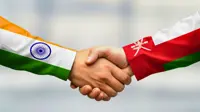Refarming spectrum to impact connectivity, environment and tariffs: study
05 Jun 2012
The telecom regulator's current proposal will have a substantial cost to the industry, resulting in hike in tariffs and causing significant inconvenience to consumers, with no benefit to any involved stakeholders, according to a study.
The report points out that the maximum harm will be to the rural consumers, the already-connected, as well as the large population of waiting-to-be-connected, according to a report by London-based market intelligence firm Analysys Mason.
The current recommendations lack the rigour and comprehensiveness of regulatory impact assessment as observed in other markets where refarming has been carried out or is under process, said Pankaj Agrawal, co-head, Analysys Mason India.
Key operational considerations such as the timeframe required for such large scale migration of sites, viability of both 900 MHz and 1800 MHz spectrum during the transition phase, as well as availability of sufficient spectrum to support existing voice traffic along with new technologies such as UMTS/LTE have not been analysed thoroughly in the current recommendations, he added.
The study was commissioned by Bharti Airtel, Idea Cellular and Vodafone India.
The report estimates that the implementation of current refarming recommendations will require replacement of 286,590 existing 900 MHz base stations with 1800 MHz equipment, in addition to deployment of an additional 171,954 new base stations on 1800 MHz to fill coverage
gaps.
This will result in an incremental capex of Rs54,739 crore and incremental annual operating expenditure of Rs11,762 crore. If the incremental investment in refarming and the costs of spectrum are passed on to consumers in the form of enhanced retail voice tariffs, the overall tariffs will go up by as much as 64 paise per outgoing minute (30 paise due to refarming and 34 paise from spectrum investments).
The report also estimates the impact on environment due to these additional sites at 5.4 million tonnes of carbon di-oxide, which is equivalent to pollution caused by 4.5 million cars annually.
.webp)





















